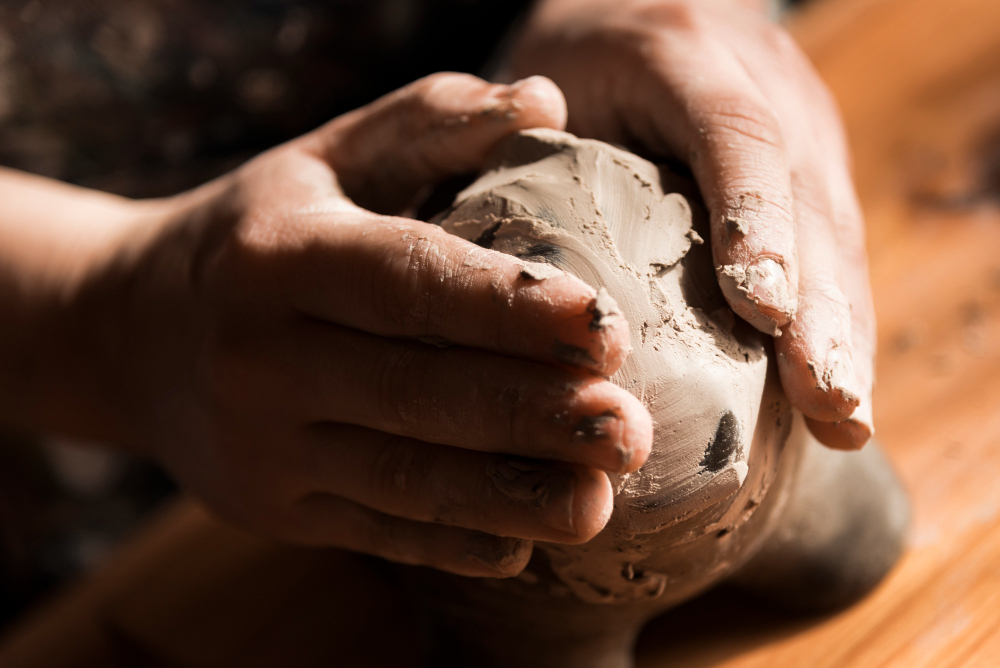Sculpting a face out of clay is a journey through art and expression, offering both the novice and the experienced sculptor a chance to explore the depth of human emotion and form. This tactile process of creation allows for a unique connection between the artist and their medium, as they bring life to a block of clay. Whether you’re aiming to capture a moment of serenity, a spark of mischief, or a gaze filled with wisdom, each sculpture begins with the same foundational steps. This step-by-step guide will lead you through the artistry of sculpting a face in clay, from the initial preparation to the final touches, ensuring that each curve and contour contributes to a masterpiece of expression.
Preparing Your Tools and Materials
Before you embark on sculpting, it’s essential to gather all necessary tools and materials. You’ll need high-quality sculpting clay that’s soft enough to manipulate but firm enough to hold details. A variety of tools are also crucial for this delicate work: wire loop tools for removing large amounts of clay, ribbon tools for finer details, rubber and wooden modeling tools for smoothing and shaping, and a needle tool for marking and measuring. Don’t forget a sturdy work surface, preferably a rotating sculpting stand, which allows you to view your sculpture from all angles as you work.
Establishing the Basic Shape
Begin by kneading your clay to ensure it’s pliable and free of air bubbles. Roll the clay into a ball, then press it into a thick oval shape, this will serve as the base of the head. Using your hands, define a rough outline of the facial features, marking where the eyes, nose, and mouth will be. It’s helpful to divide the face into thirds: the forehead to the eyebrows, the eyebrows to the bottom of the nose, and the nose to the chin. This helps in achieving accurate proportions right from the start. Remember, this stage is about establishing basic forms and proportions, refinement comes later.
Sculpting the Eyes and Nose
Eyes are often said to be the window to the soul, and in sculpture, they are central to capturing expression. Create two indentations for the eye sockets using a small ball tool or your thumbs. For the eyeballs, roll tiny balls of clay and press them into the sockets, then shape the eyelids around them. The nose can be formed by adding a small wedge of clay to the center of the face and shaping it to create the bridge and nostrils. Use your needle tool to define the nostrils and a small loop tool to refine the shape of the nose.
Crafting the Mouth and Ears
The mouth is a focal point of expression, so take your time to get it right. Roll a thin coil of clay and place it where the lips should be, then use your modeling tools to shape the upper and lower lips, ensuring they align with the nose and eyes. For the ears, add small pieces of clay to each side of the head, shaping them to reflect the natural curves and folds of the ear. Pay attention to their placement: the top of the ear aligns with the eyebrows, and the bottom aligns with the nose.
Adding Character and Final Details
With the basic features in place, you can now focus on adding character and refining details. This is where your sculpture truly comes to life. Adjust the expression by shaping the eyebrows, adding wrinkles or smile lines, and refining the contours of the cheeks and jawline. Use your loop tools to add texture to the hair, if included, and your needle tool to create finer details like eyelashes or the texture of the lips. Throughout this process, continuously step back to view the sculpture as a whole, ensuring balance and harmony in the features.
The Reward of Patience and Practice
Sculpting a face in clay is an art that rewards patience, practice, and attention to detail. Each step, from establishing basic proportions to adding the final details, contributes to the overall expression and realism of the sculpture. Remember, every face you sculpt is an opportunity to explore new expressions, techniques, and aspects of human nature. With time and experience, you’ll develop your own style and approach to this ancient and expressive form of art, creating clay sculptures that resonate with emotion and craftsmanship.
